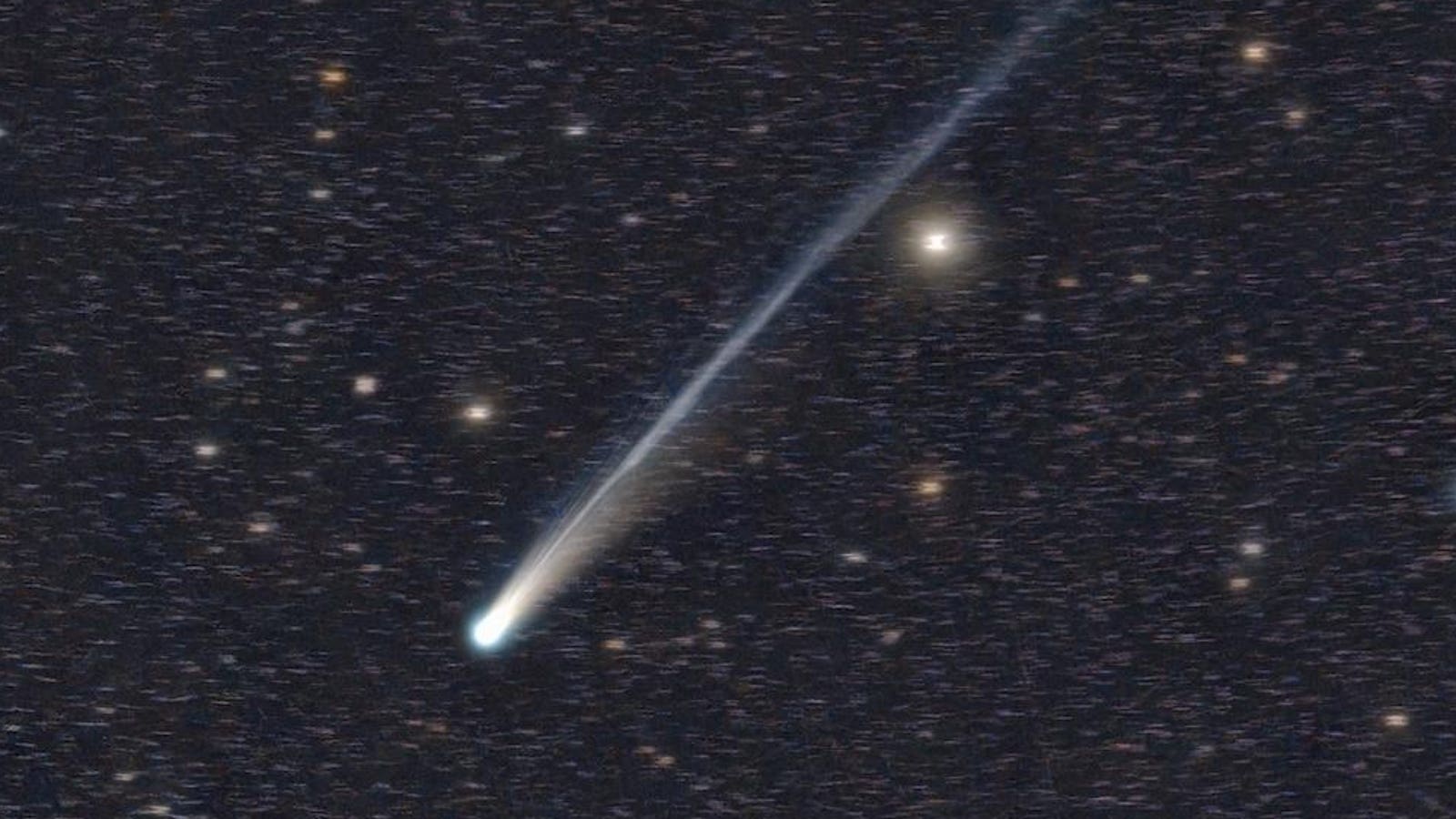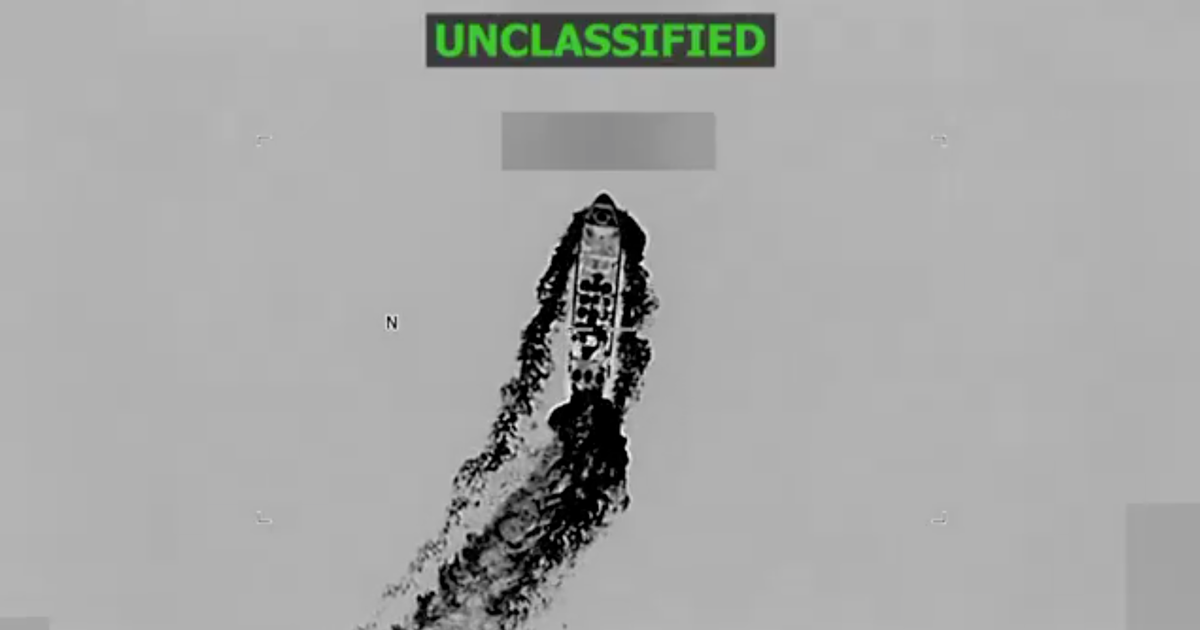Topline
Sunday, Oct. 19, 2025, sees two comets approach their brightest — and perhaps even be visible to the naked eye. Comet Lemmon (also called C/2025 A6) and the dimmer Comet SWAN (C/2025 R2) are on different journeys, with the former barreling towards the sun while the latter is traveling away from it. There’s an easy way to find Lemmon on Sunday — just find the stars in the handle of the Big Dipper and go in a banana-shaped curve straight to it. Remarkably, both Lemmon and SWAN will reach their closest to Earth at the beginning of next week, around the peak of the Orionid meteor shower on Oct. 20-21 during a new moon.
Comet C/2025 A6 Lemmon on Oct. 11, 2025, as imaged by Gianluca Masi at The Virtual Telescope Project (www.virtualtelescope.eu).
Gianluca Masi at The Virtual Telescope Project (www.virtualtelescope.eu). Used with permission.
Key Facts
Comet Lemmon makes its closest pass by Earth on Oct. 21 at 55.4 million miles (89.2 million kilometers), followed two weeks later by its closest pass of the sun at 49.25 million miles (79.25 million kilometers), according to Space.com.
Moonlight will begin to interfere with observations in late October, making this coming week the best time to see Comet Lemmon and Comet SWAN.
The comets are visible in the northwest (Lemmon) and southwest (SWAN) about 90 minutes after sunset. However, you’ll need a pair of binoculars (try 8×42 or 10×50). Being in a Dark Sky Place or somewhere that looks dark on a light pollution map will help.
According to the Comet Observation Database, Comet Lemmon is shining at magnitude +4.9 and Comet SWAN shines a little dimmer at magnitude +5.9.
The easiest way to find the comets in the night sky is to use the finder charts at In-The-Sky.com or stargazing apps such as Sky Guide, Stellarium and SkySafari.
Comet Lemmon can be seen before dawn on Oct. 19 — the best time will be 6:00 a.m. EDT.
Stellarium
When And Where To See The Comets
The best time to spot Comet Lemmon and Comet SWAN on Sunday, Oct. 19, is during a 30-minute window starting about 90 minutes after sunset where you are. Both are visible after sunset but in opposite parts of the sky — Lemmon in the northwest, SWAN in the southwest. For New York City, where sunset is at 6:06 p.m. EDT, the ideal time for evening viewing is 7:36-8:06 p.m. EDT.
Comet Lemmon can also be seen before dawn. Look during a 30-minute window beginning about 90 minutes before sunrise. With sunrise at 7:12 a.m. EDT in New York, the best time will be 5:42-6:12 a.m. EDT — though earlier observations may also reveal the comet rising in the northeast.
The best time to see Comet Lemmon on Oct. 19 will be 90 minutes after sunset.
Stellarium
How To Find Comet Lemmon
Distance from the sun: 65.4 million miles (105.3 million kilometers)
Distance from Earth: 55.9 million miles (89.9 million kilometers)
Before sunrise on Sunday, Oct. 19, the comet will be in the northeast. The Big Dipper’s handle — which will point down toward the horizon — can be used to find it. Trace the stars of the Big Dipper’s handle in an arc, or banana-shape, to go in a curve about half the distance of the handle. Lemmon will be below the star Cor Caroli, the brightest in the simple two-star constellation of Canes Venatici. From New York, the comet will stand about 7 degrees high — just less than the span of your outstretched fist — at 5:43 a.m. EDT, and will climb higher as dawn approaches. Venus rises at about the same time as a delicate 3%-lit waning crescent moon.
After sunset on Sunday, Oct. 19, look for Comet Lemmon halfway along a line between Alkaid — the bright star at the end of the Big Dipper’s handle — and bright star Arcturus farther west. Its height above the horizon varies by location, but from New York it will appear about 16 degrees above the northwest horizon at 7:36 p.m. EDT — roughly the width of four outstretched fingers held at arm’s length — and will gradually sink as twilight deepens.
The best time to see Comet SWAN on Oct. 19 will be 90 minutes after sunset.
Stellarium
How To Find Comet Swan
Distance from the sun: 90.2 million miles (145.1 million kilometers)
Distance from Earth: 24.3 million miles (39.1 million kilometers)
Blueish-green Comet SWAN will be visible in binoculars on Sunday, Oct. 19, low in the southwest after sunset. SWAN will be in the constellation Scutum, above the famous “Teapot” asterism in the constellation Sagittarius. It lies in front of the Milky Way’s dense star fields, which will be visible behind the comet in binoculars. The comet’s height above the horizon will vary depending on your location, but at 7:36 p.m. EDT from New York, it will be around 34 degrees up as it becomes visible.
Check my feed every day this month for a daily “comet tracker” with finder charts and tips for viewing Comet Lemmon and Comet SWAN from mid-northern latitudes. Also read How To Photograph The Green Comets, Best Stargazing Apps For Finding The Comets and 25 Dark Sky Parks In The U.S. To See The Comets.
Further Reading
First Appeared on
Source link












